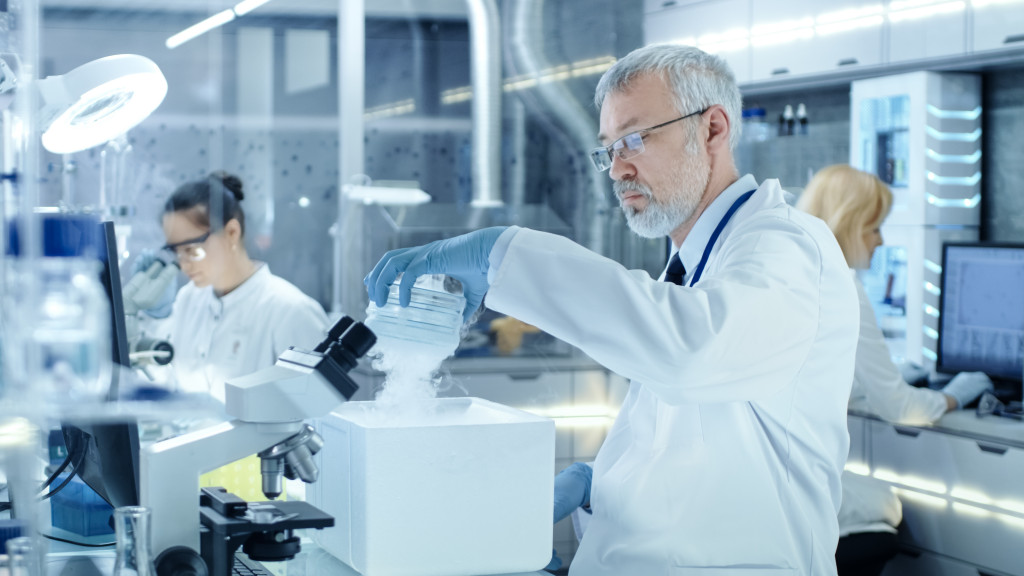The health and lives of millions of people around the globe rely on the development of new drugs. While creating new drugs and improving existing ones is far from speedy, certain technologies are proven effective in producing results faster than ever before—all without sacrificing safety, quality, and effectiveness, of course.
In this article, we talk about some of those technologies that have helped and are continuing to help speed up the development of drugs and, ultimately, saving millions of lives in the process.
-
Machine learning and artificial intelligence

Machine learning refers to the process of using computer technology and analytical tools to teach a machine to see more, do more, and understand more than humans can. Many industries apply this type of technology in their own right, including the pharmaceutical industry. In drug development, machine learning helps find and develop new drugs more efficiently, particularly in preliminary drug discovery.
Take the medical research of the MIT Clinical Machine Learning Group as a primary example. The study focuses on developing algorithms to understand disease processes better and thus devise more effective treatments for them, such as Type 2 diabetes. The startup twoXAR also used machine learning to pinpoint potentially effective drugs against Parkinson’s disease all within a span of a few minutes, much like a Google search.
-
In vitro and in vivo imaging
In vivo imaging systems are used to look deeper into the internal systems of living organisms for research and diagnostic purposes. Researchers use this technique on plants, animals, and humans. In vitro imaging systems, on the other hand, can bring forth valuable information for preclinical studies, a vital part of the drug development process. In more ways than one, both techniques can speed up the process and help bring new drugs to the market faster, safer, and easier.
-
High-throughput screening
In the early stages of drug development, researchers search for chemical compounds that can affect particular properties of an illness or disease. Before, this process involved testing compounds against a biological sample one by one, making it one of the most tedious and error-prone steps in the drug-making process. Hence, it is also why it used to take so long to put out a new pharmaceutical drug on the market.
Today, drug researchers now use a technology called high-throughput screening, which uses special equipment to analyze the interactions of chemical compounds faster and more efficiently. This technology has made the process so fast that, in fact, a laboratory can test as much as 100,000 samples per day, shortening this step by months compared to the manual process that was done before.
-
Big data mining
Researchers dedicate a lot of their time to studying what has already been published about various compounds to speed up drug development. However, this step in and of itself is incredibly time-consuming, given the amount of available data today. The workaround? Big data mining.
Big data mining refers to the extraction techniques performed on large volumes of data, hence the name ‘big data.’ This method takes off months of research in multiple fields of study, especially in the medical and pharmaceutical industries. Through data mining, researchers can find the most relevant information among huge amounts of data and save time, money, and energy on unnecessary experimentation and research.
Furthermore, data mining and analysis can also be beneficial for drug repurposing to find new uses, indications, and contraindications of existing drugs.
-
Virtual clinical trials

Another growing trend in drug development is virtual clinical trials. Thanks to the development of virtual conferencing technology, telecommunicating is easier and more accessible now more than ever. Like its application in telemedicine, using virtual tools in clinical trials help reduce costs and decreases the burden on patients or participants. More than that, making the trials easier encourages active patient participation and retention, helping speed up drug development as a whole.
Furthermore, the use of virtual clinical trials has proven to be more cost-effective, both for patients and researchers, resulting in fewer costs and more efficient use of available resources.
When it comes to technology application in drug development, the future definitely looks bright. The technologies that we have now may seem ultra-sophisticated than what we had before. Still, with the rate at which various technologies are developing, we can only look forward to even more cost-effective, efficient, and accessible applications in drug development and other aspects of the biomedical field.






